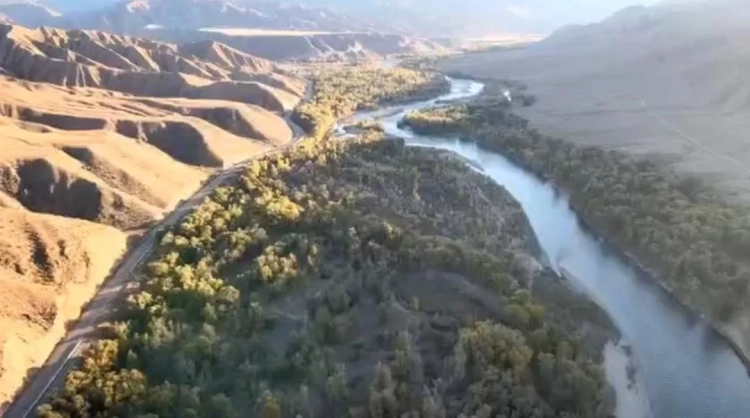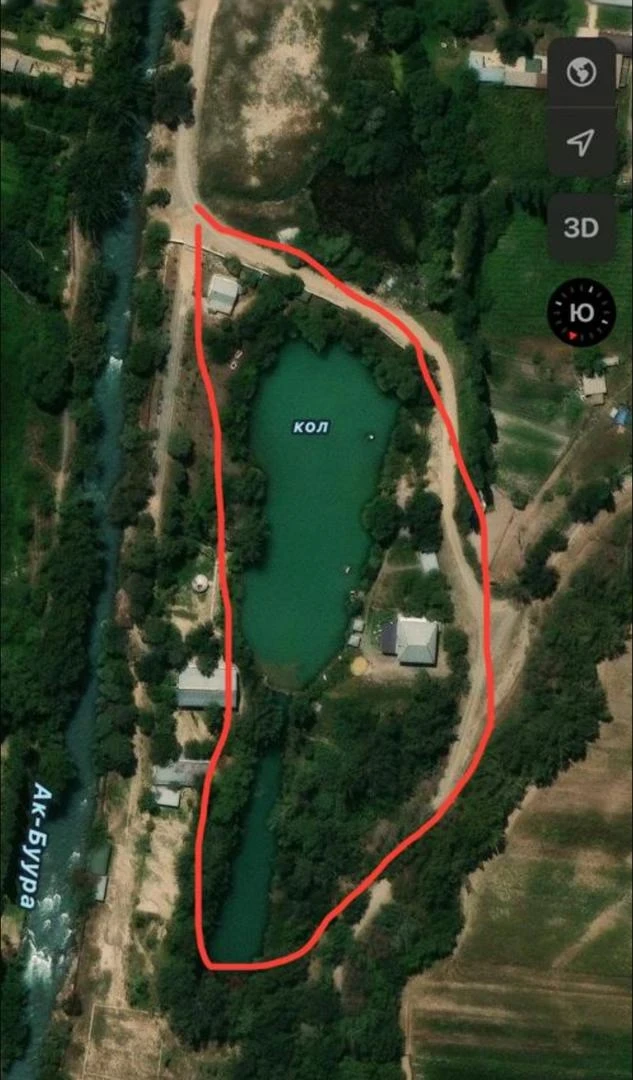Mutawalli of the Waqf
Thus, from the mentioned documents, it is clear that Alimbek, having constructed the main canal, distributed land in small plots (in "cheks") to the population with the condition of fulfilling tax obligations in favor of the waqf. Apparently, initially only the household, or in modern terms, the homestead plot of two tanaps was exempt from taxes in the cheking economy.
It can be assumed that these tax-exempt plots from each household were not merely a form of charity from a powerful feudal lord, but served as a certain reward, a payment for the expenses and labor that the farmer, who received the check, invested in the actual cultivation of the land, i.e., a kind of compensation for work, since breaking virgin land and irrigating vacant areas was far from easy and was not limited to the construction of the main canal. The authoritative historian of the Kokand Khanate, V. Nalivkin, depicts such a picture of the "revival" of uninhabited areas during the khanate period. If the feudal lord was an influential official, then, having secured the khan's permission and using his authority, he compelled the population of nearby kishlaks and ayils to dig the main irrigation canal. Then water was released, and the area for future irrigation was limited as much as the canal allowed, and the land was declared the property of the feudal lord on the grounds of revival. However, this area was still not ready for agriculture. There were no willing tenants to take such land for rent. Greater labor costs were still needed to level the plots and construct branching canals. For this purpose, the landowner invited the poor to settle on his land, which he divided into plots-cheks, promising: "...We will not take anything from you, later... we will not offend you." The poor dekhkans settled on the plots, cultivated them, thus remaining as if informal tenants.
It can be assumed that Alimbek distributed plots in cheks that were not very suitable for agriculture, stipulating the condition that two tanaps per household would be exempt from taxes for land cultivation. As the governor of the Andijan vilayet, Alimbek could indeed make such a decision. And on the "revived" lands of Alimbek, a new settlement appeared, named Alimbek-chek.
According to the waqf document, Alimbek referred to himself as the mutawalli of the waqf, and later - his descendants. According to the information gathered by the head of the Andijan district in 1876, immediately after the annexation of Fergana to Russia, it is evident that the Alimbek madrasah had income from a large area of land. The decree issued (as stated in the "information") by Sha-Murad-khan in 1859 fixed that the lands of the Alimbek madrasah were located near the kishlak Chin-Abad and had an area of 10,000 tanaps, i.e., 1660 desiatinas, or about 1825 hectares. By 1876, only 5,000 tanaps were under crops, while the other 5,000 remained uncultivated, likely fallow.
As can be seen from the archival documents, the Alimbek madrasah, as a waqf, owned, in addition to the settlement, two burial mounds - Yuz and Gursumad, the origins of which remain unclear.
According to information from D. Zainabitdinov, the main plots of waqf lands of the Alimbek madrasah were located in the areas of Babalashkar, Kok-Bel, and Papaan. According to the land tax commission data from 1893, the settlement of Alimbek-chek along with the burial mounds had 819 desiatinas and 1990 sazhen of cultivated land, from which an annual tax of 1,461 rubles and 24 kopecks was due to the treasury.
Undoubtedly, the recorded area was only noted at the time of the survey and did not reflect the state during the peak of the waqf. Moreover, by this time (more precisely, back in 1881), in the Osh volost from the "legal," so-called uncultivated lands exempted from taxes by the khans, only 30 tanaps were allocated to the waqf of the Alimbek madrasah.
Although the waqf of the Alimbek madrasah was formalized according to all Muslim canons, it was not stable. As seen from the document from 1860, seven residents of the Alim-Abad or Alimbek-chek settlement raised a case regarding the land they considered their own and which they did not wish to transfer to either Alimbek or the waqf. Alimbek was forced to pay them 500 gold coins, and the land was transferred to the waqf of the madrasah. The document does not reveal the secrets and motives of the contradictions that led to the dispute between the powerful feudal lord and the landowners, which was resolved not in favor of the khan's official. Here it can be assumed that Alimbek, using his power as the governor - hakim of the Andijan vilayet, initially attempted to simply expand his waqf holdings at the expense of his neighbors, but they, having secured some influential support, initiated a lawsuit, and the feudal lord was forced to concede; however, he still bought their plots for money and ultimately incorporated them into his waqf.
Kyrgyz Waqf of the 19th Century









































